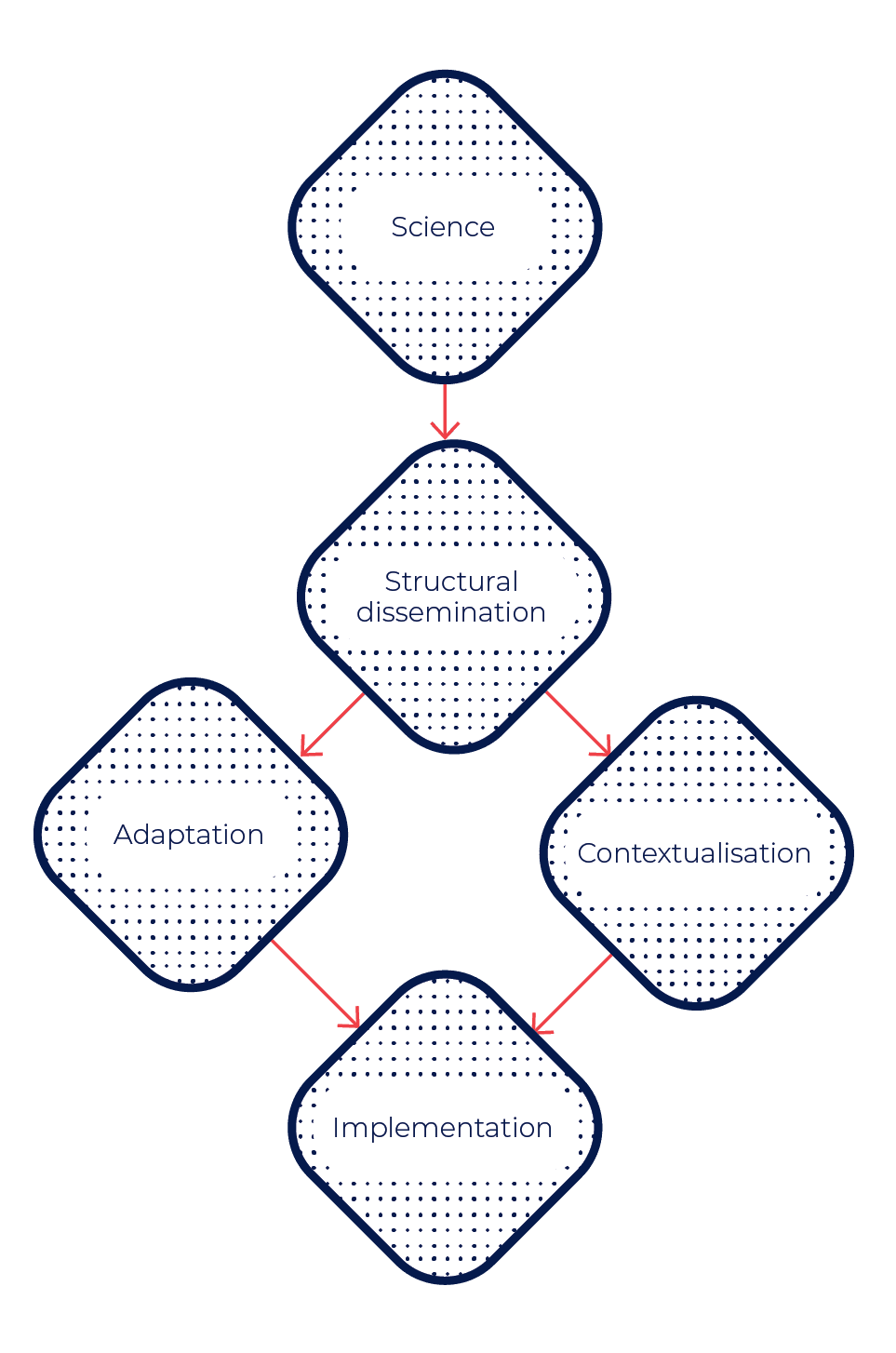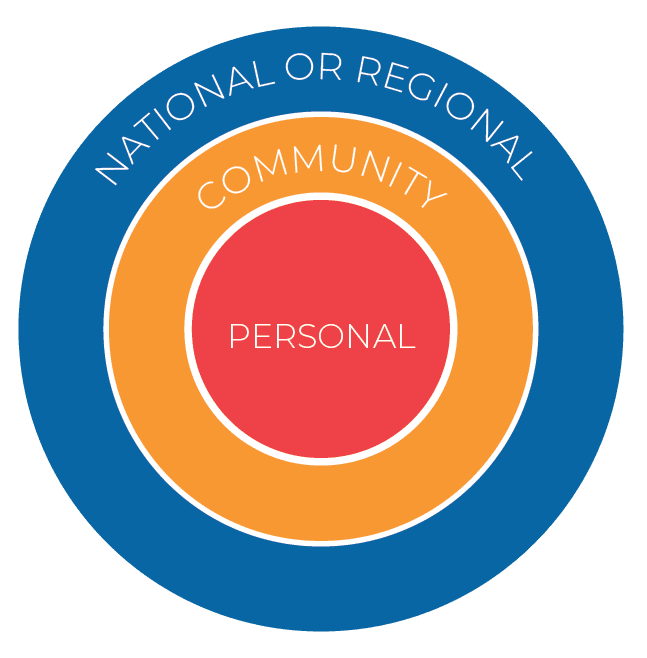2020 International
first aid Guidelines
Evidence to action
When using these Guidelines, National Societies should consider risk factors, health care systems and capabilities, public health culture and legislation relating to first aid. The common health concerns and injuries identified by specific communities or target groups must be addressed with special attention paid to their cultural and religious beliefs as well as the available resources.
Where possible, this process should be done with the National Society scientific advisory group (or equivalent). Ideally, this group would include education experts, medical experts, researchers, first aid educators and local community representatives. This can be accomplished through partnerships with other stakeholders, including among National Societies.
Shifting the Guidelines from evidence to action consists of three elements:
• Adaptation for use in your National Society that recognises the varied personal, community, regional and national factors that impact an educator’s ability to provide first aid education and an individual’s ability to provide first aid.
• Contextualisation to match the unique contexts that National Societies operate within, including those that have varying degrees of access to resources or medical care.
• Implementation which is a process of creating or revising first aid education interventions that are based on the Guidelines.

Figure 3: From Evidence to action
Changes over time
This framework provides a structure for National Societies to examine their first aid education programming in order to adapt the Guidelines to meet their specific needs. The analysis that is conducted using this framework represents a snapshot of time, meaning that it must be reapplied at regular intervals to be most effective.
Adaptation
Local factors
Examine common personal, community, and regional and national factors that impact individuals’ ability to provide first aid.
Local factors, organised by personal, community, and regional and national factors are nested within one another. This reflects that the
factors are influenced by one another.
Identify the key factors that will influence how first aid care and education are provided. This may result in a high number of factors, which then need to be turned into some actionable principles for contextualising the Guidelines.

| Local factor | Considerations | Guiding questions |
|
Personal |
• Individual values, ethics and moral imperatives • Risks to their health (acute illness or injury) • Preferences of the individuals |
1. How does an individual identify with their communities? 2. What is important to individuals (values; family.)? 3. What are the risks to individuals’ health? 4. What preferences are shared? |
|
Community A community could also refer to the workplace. |
• Cultural norms, beliefs, and practices • Prevalent risk and health factors • Resources available (e.g., defibrillators) • Access to medical care |
1. What cultural beliefs may influence a first aid provider’s ability to provide care? 2. Are there first aid systems or groups already in place? What types of resources are available? 3. What are the patterns in how people are injured or the types of illnesses they experience? 4. How are gender and sex perceived in this community and how might they affect a first aid provider’s ability to provide care? |
|
National or regional |
• Legal and regulatory requirements • Influence of specific industries • Health care systems |
1. What laws are relevant to providing first aid care? 2. What legislation exists that may require or inhibit a first aider providing care? 3. What industries influence providing care and how? |
Note: A PESTEL analysis may help you to frame the adaptation section. This analysis considers the political,
economic, socio-cultural, technical, environmental, and legal forces that influence programming.
Explore the guidelines
Published: 15 February 2021

First aid
Explore the first aid recommendations for more than 50 common illnesses and injuries. You’ll also find techniques for first aid providers and educators on topics such as assessing the scene and good hand hygiene.

First aid education
Choose from a selection of some common first aid education contexts and modalities. There are also some education strategy essentials to provide the theory behind our education approach.

About the guidelines
Here you can find out about the process for developing these Guidelines, and access some tools to help you implement them locally.
